Seascape photography explained
A comprehensive guide to Seascape photography.
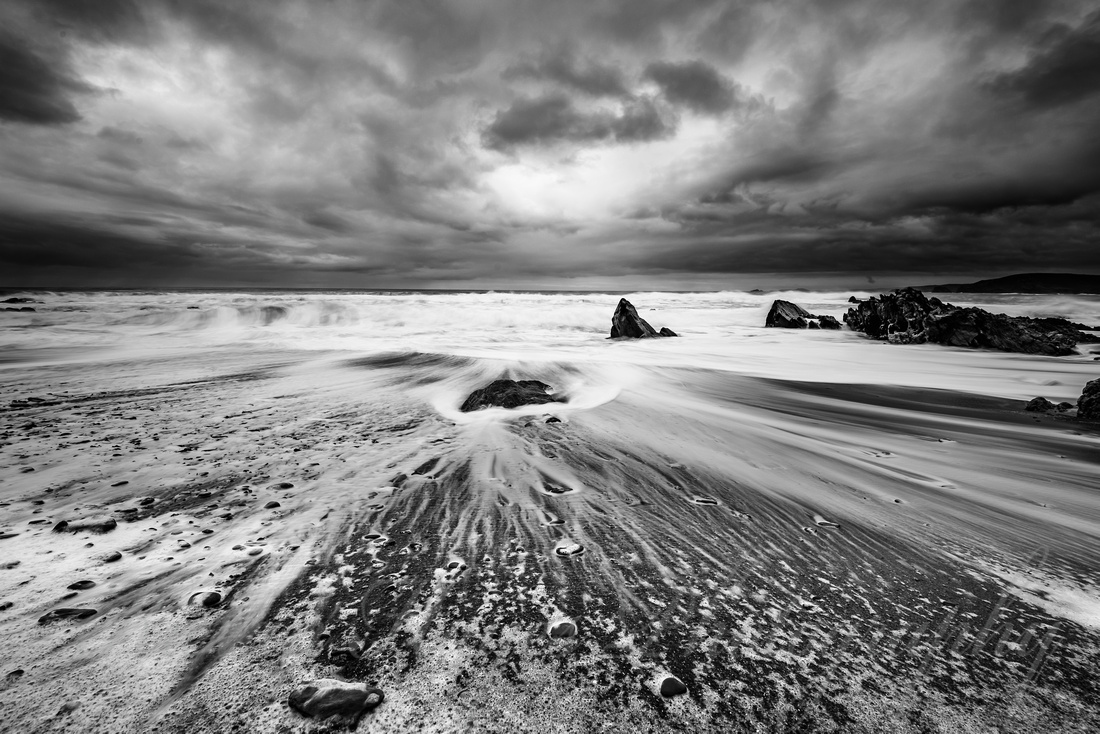

Seascape Photography for me is the art of capturing the never-ending battle between land and sea.
We can use these two fantastic elements to our advantage through the use of shutter speed, helping to highlight their differences and playing with the effect to create a more dramatic image through movement.
From the contrast of the solid never moving cliffs or rocks, to the swirling and spraying of the wild sea as its waves wrap around anything they can while gnawing away at the coastline.
With the correct techniques the solid ground can act as an anchor in the image being both sharp and in focus, the water and clouds, if the conditions are right, can create a magical motion blur via Long Exposure Photography.
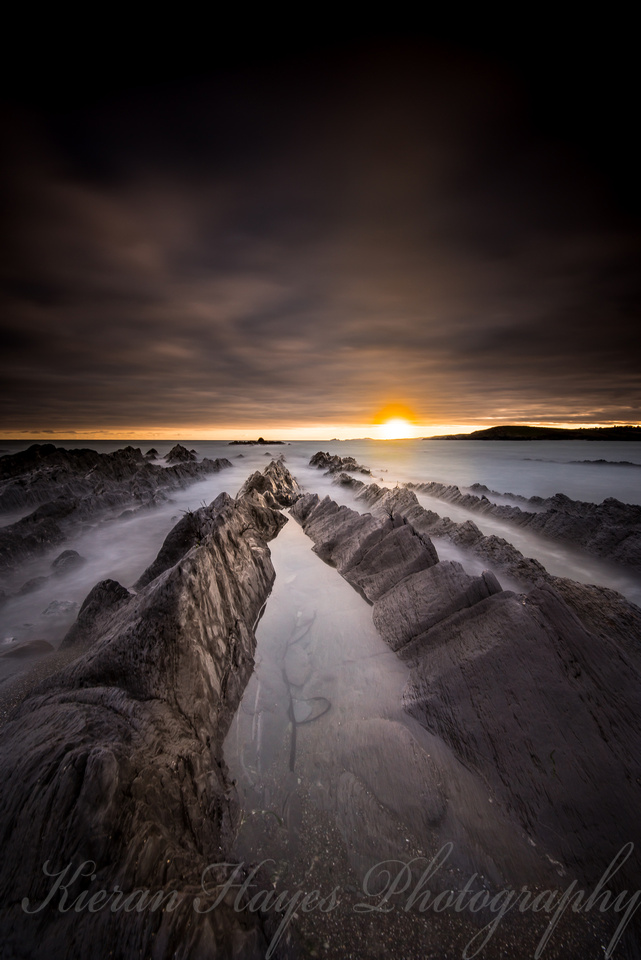

Seascapes photography can take various forms from your high-speed shutter shots, capturing every single drop of that amazing spray as a wave crashes against a cliff face and freezing it in mid-air, or the other extreme of minute-long exposures creating a surreal milky foggy effect in the water. The use of a half-second exposure to blur the movement of the waves, still keeping the detail in the sea body behind the wave is also one of many other options.
Which Shutter speed is right?
Well all of them are, its up to you, your vision and the conditions to use these different methods to express what the scene says or feels like to you.
Look at these two shots below taken at the same place within minutes of each other, through the use of shutter speed we can change their feel and mood.
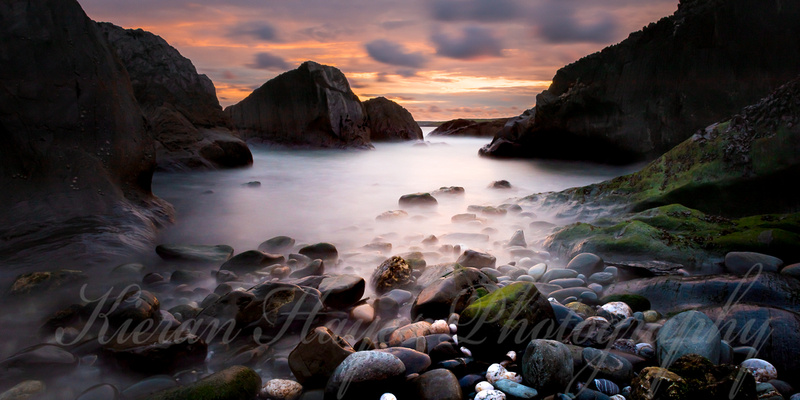

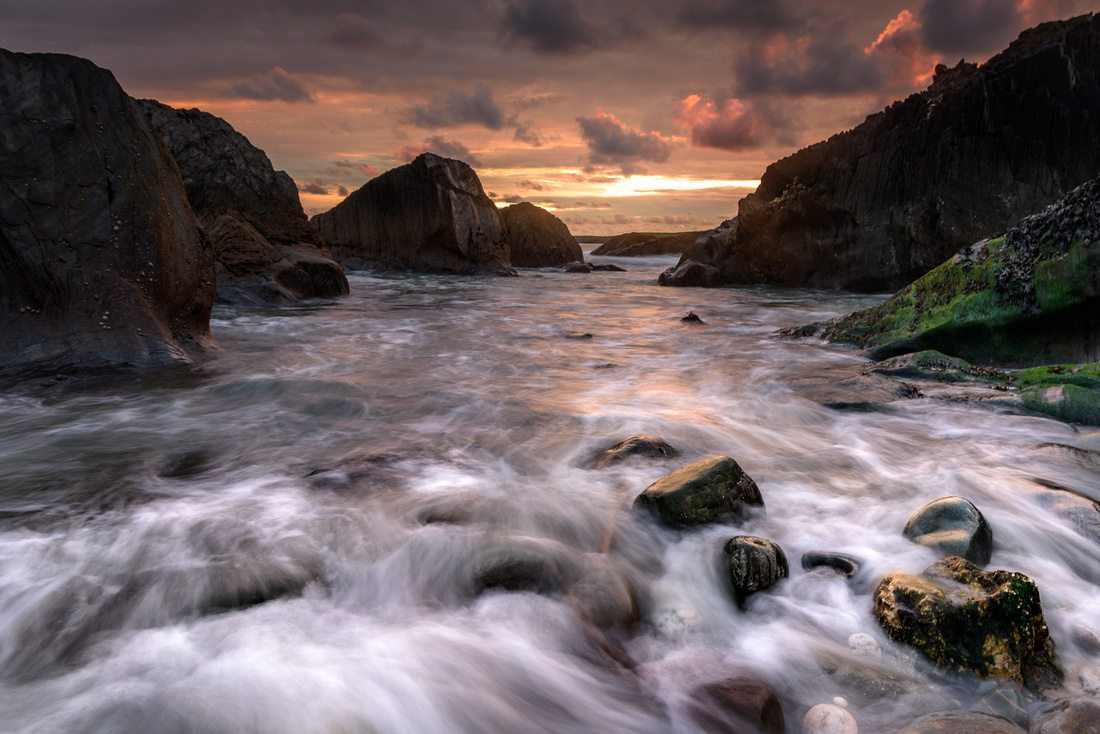

Before we get started on how to capture these effects I want to pass on a few bits of advice I normally share on my Workshops with people starting out in Seascape photography.
Firstly buy good boots with great grips, they can be anything from waders to wellingtons or waterproof boots. Once your dry and safe that's the most important thing.
I have both seen and heard of numerous photographers slipping and falling on the rocks due to poor grips. One slip and it could be fatal, a nasty accident for you or your equipment.
Secondly NEVER turn your back on the sea. Yes, it's beautiful and can be consistent but rogue waves are very real and have surprised me numerous times over the years. Different countries have very different coastal conditions and countries like Ireland get some very large rogue waves.
Thirdly buy some good waterproof clothing as yes you are going to get wet.
After I return home soaked Nadja always remarks "oh can't wait to see the photo's". That may seem like an inside joke but I always find the times I get destroyed are the times I see something and just go for it. When I put myself where the action is and try to capture an image I can see in my mind's eye. Standing back and watching from dry land can often be an option but you're missing the closeup impact and action then, especially when shooting with a wide-angle lens.
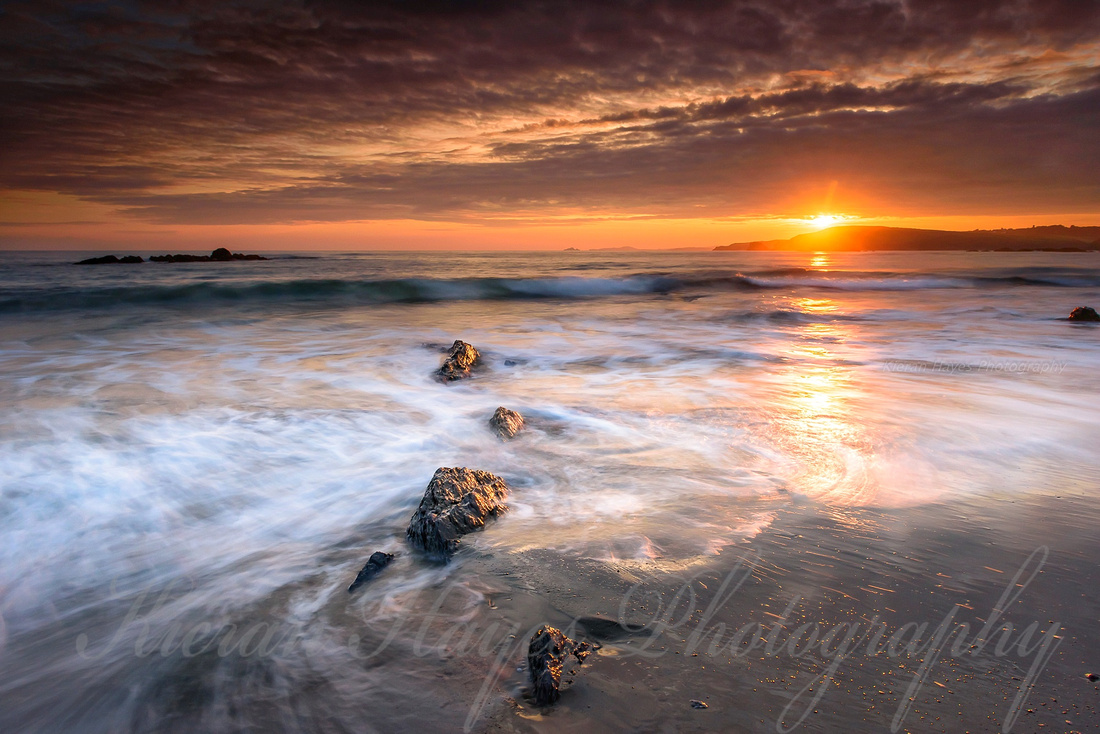

Lastly, take the photographs in Raw and use manual mode. Using auto is like painting with a broom whereas manual mode is like painting with a delicate paintbrush, you have far greater creative control over the outcome.
So when is the right time for Seacapes?
As with all types of photography, light is king and the golden hours around sunset & sunrise are ideal.
The soft warm glow at these times of the day is both spectacular and magical. They can also cause a few problems for photographers, with the harsh contrast between direct sunlight and shadowed rocks or cliffs. This is where your filters come in (more about that later).
Correctly exposing for the sun is your main priority while still keeping your shadows reasonably well exposed. Your camera's histogram will always be your best friend when it comes to correctly exposing your photograph, always remember when you're learning its better to verge on underexposing your shadow detail than overexposing the highlights as you will burn out the sky, this simply can't be recovered in editing afterwards. The easiest time for beginners is just after sunset as the light is a lot easier to balance and you can experiment at ease then.
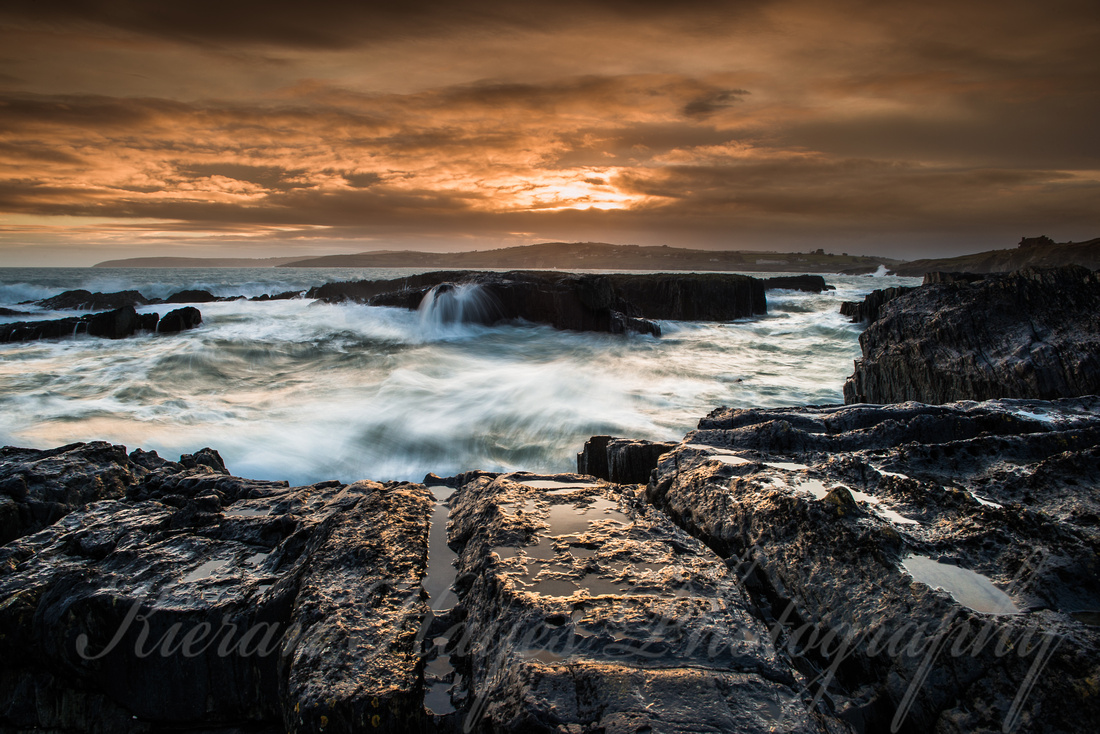

So what equipment is necessary?
1.- As Seascape photography usually involves being very close to the water so proper wet weather clothing and waders or waterproof boots are your first stop.
2.- A good quality tripod is your second best friend as most of the time it will be at or in the water. Normally tripods are on dry land and the only vibrations they receive are wind-based but while in the water you have another variable, the water itself rushing past and around the legs of the tripod. The dragging and pushing and pulling on your tripod while at the water's edge is difficult to control but I have a few very helpful tips further down this post for anyone new to this genre.
3.- Your Camera and Lens. Yes, that was to be expected I suppose :-) a good few lens cleaning cloths or wet wipes are also vital, fighting with the mist and spray can be a constant battle. I use a Nikon D850 and a D810 with a variety of lenses depending on the situation, the D850 is a fantastic camera for this line of work, a real monster.
4.- Filters are a seascape photographers best friend and vital for creating the effect you want.
My go-to filters are Formatt Hitech Firecrest filters, I use 6 &10 stop Neutral density filters and 3 & 5 stop hard nd grads. They are usually the only filters I use. I am an official ambassador for their products and can offer a discount or Promo code HAYES10 via their website. Click Here for their latest up to date special offers.
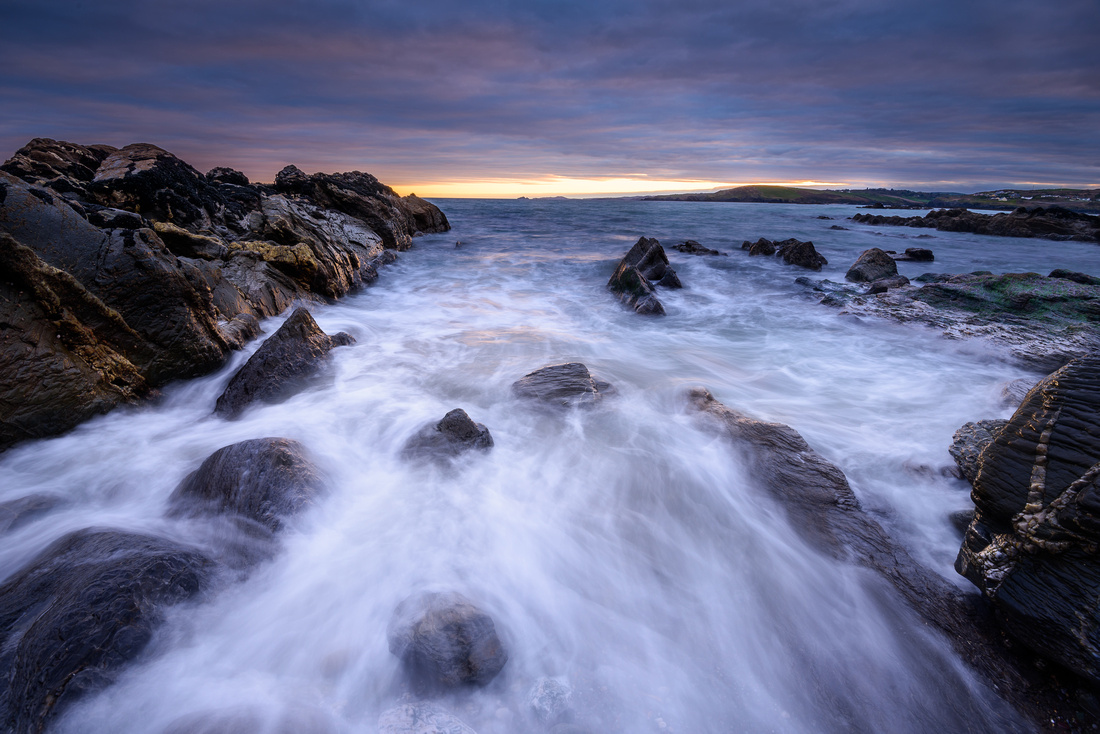

So how do we choose the effect we want in a photograph?
It's all about weather and conditions for me, I usually decide on arrival as the conditions in Southern Ireland change so quickly. This normally throws planning for a specific style of photoshoot out of the window. Now that can be a problem but it also helps keep a creative outlook for the shoot until you arrive at your location.
Similar to landscape photography the golden hour is our time to shine. So its early morning or late evening to catch those beautiful rays of light, catching the soft glow of the sun as it sinks or emerges from the horizon. Now this means getting there early and as most new photographers I have met prefer sunsets lets explain that setting.
You normally arrive at your location at least an hour before sunset, this gives you time to observe water movement, cloud cover, tidal surges, and wind. This is your prediction time and this for me is the most important step in capturing an image.
Always remember composition is and always will be key, you can capture the most technically brilliant shot but if the composition is off it will simply never be right.
So spend the time and watch the clouds, see if they are travelling in a particular direction and ask yourself can you use this? A little trick I use for examing the clouds hidden detail is a pair of sunglasses, with the naked eye we often can't see all the detail due to the brightness of the sky.
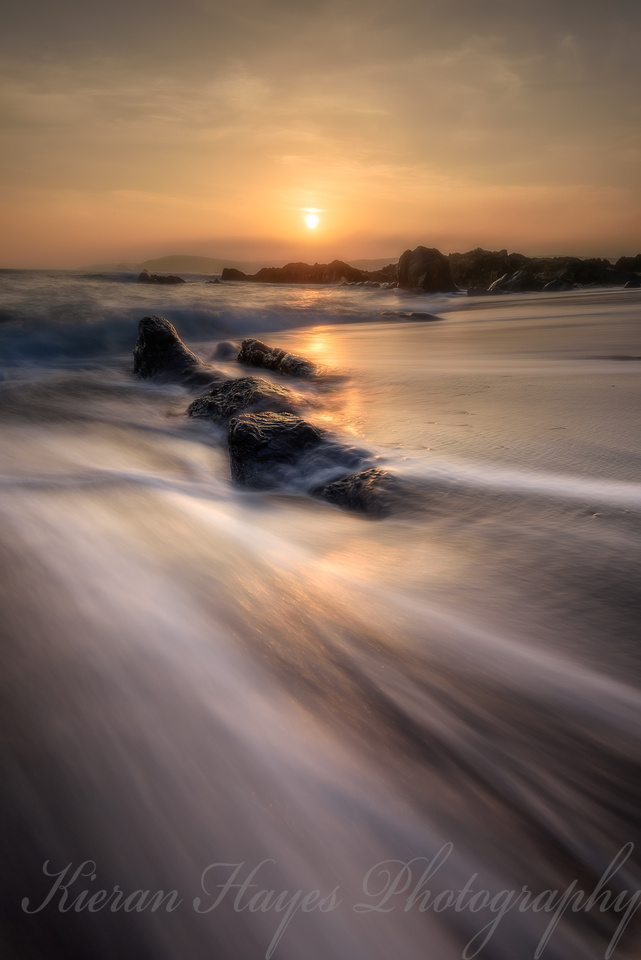

Watch the waves are they moving in a particular pattern? How is the tide? Is It coming or going?
Often times you can see beautiful movement in the waves as they whip past rocks or curl up a sandy bank and slip back to sea.
The tide can both expose or hide rock formations so keep this in mind while planning your shoot.
The tide can also affect the colour of your sand and how light behaves on rocks etc. Damp sand is darker which normally isn't a problem, wet rocks above the waterline can have shimmering light reflections bouncing off their surface which can also add another dimension or problem to your shot. These reflections are very easy to overexpose, so your position in relation to the reflections is another aspect to keep an eye on.
Lastly but more importantly ask yourself what do you see and what do you really like about the scene before you? What are its positives? How can we highlight them and also can we disguise or hide any of the distractions or negative aspects of the image? This might seem straight forward and yes it usually is, you would be surprised how many photographers go to the beach and put their camera in one position without really thinking about it and just keep snapping away from there.


Setting up.
Once you find your spot and conditions are starting to become favourable the first step is to set up your tripod, now this is where years of experience have thought me to extend the narrower legs on your tripod to lift the joint (twist-lock or clasp) out of the sand and water. This should help prolong the life of your tripod and make it easier to clean later. If your setting up on sand then press the legs firmly into the sand, this will help prevent vibrations and stop the legs being dragged by the backwash of the wave. If you're actually at the waters edge then wait for a wave to come in and as it retreats back out to sea press firmly down on your tripod and it will sink well below the surface of the sand. This has two effects in that it helps to stabilise the tripod with the weight of the sand around the legs and it also prevents the retreating water from digging under the legs and undermining the stability of your tripod. I only use heavy solid and durable tripods.
Next, place the camera on the tripod and put your bag securely over your shoulder, never leave your bag on the sand near the tide in case of sudden swells. Get your light readings and workout what filters you need depending on the effect you want. I usually meter off the sun as this is the part of the image we need to correctly expose first and then work backwards from there.
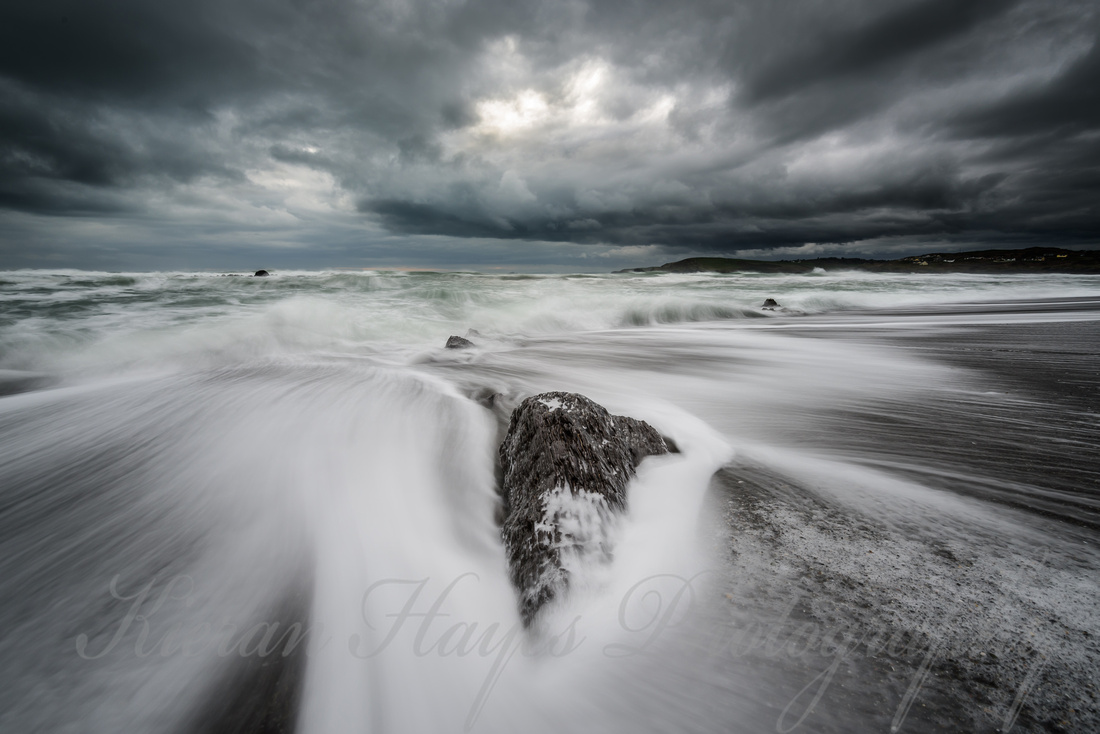

So which filters do we use and when?
I only use Formatt Hitech Filters and as an ambassador, I can offer a 10% discount on all their wonderful products via their website with the Discount code or Promo code HAYES10. The filters I normally use are a combination of a 3 or 5 stop hard graduated neutral density (nd) filters and a 10 stop nd filter for exposures between 15 seconds to minute-long exposures depending on the light at the time. This creates a beautiful motion blur in the water and can help to seemingly pull the clouds across the sky if the conditions are right.
I use the Firecrest 3 or 5 stop graduated nd filter and a 6 stop nd filter for exposures around half a second long. This effect is ideal when you want the wave to just have a slight motion blur while keeping the sea and sky all in focus and sharp. The correct shutter speed varies depending on the waves speed and the incline of the beach.
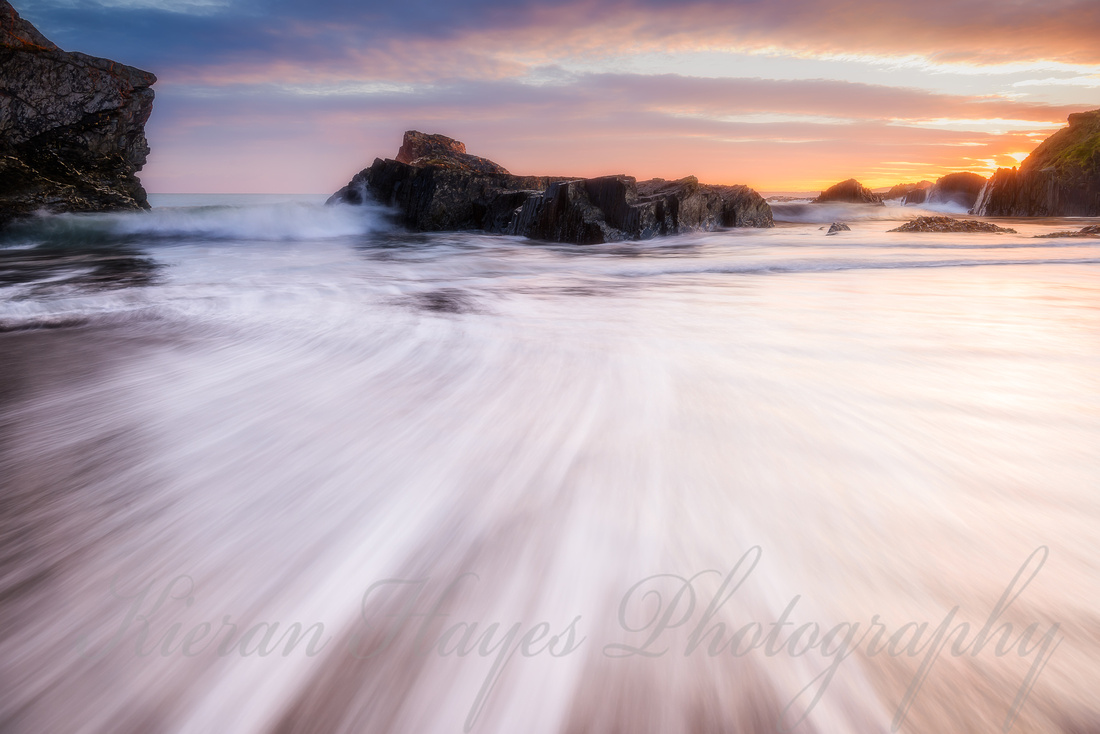

How and where to Focus.
For me, manual mode and back button focusing are second nature and vital to my work. In Portraiture and commercial work they are vital tools, for Landscape and Seascape photography I feel as though they should nearly be mandatory for everyone to learn.
There is a lot of confusion regarding focusing and the difficulties involved. A little cheat I tell people starting out is to set your aperture to F11 to achieve a good depth of field while maintaining sharpness. Next, go into Live view and zoom in to 100% on your foreground and adjust your focus manually until it's in focus then go to your background and check your focus there. If your shooting a very close foreground you may need to change your aperture to F16 to increase your depth of field, just remember this also decreases your sharpness slightly due to diffraction. I normally shoot between F9 to F11 for seascapes.


Composition is your final hurdle.
This is one of the most difficult aspects of any genre of photography as it usually requires a lot of vision or trial and error. Can you teach yourself to learn this skill? Well, the simple answer is yes but it can be a long and tedious process so I have a few little pointers for you.
The rule of thirds is always your friend, it can be used to basically set up your photograph in a standard format (a quick google will teach you all you need to know about it) yes it gets boring after a while but it gives you a solid base to start from.
As with any image that you introduce motion blur into for me, it's important to give the viewer a point to anchor the image on.
I usually compose an image with a solid object directly at the start of the photograph. Your eyes and mind then have a solid grounding point and from there you can be drawn into the image. There are obviously exceptions to the rule but again this is just a good starting point.
The most important aspect to remember is what you like about the scene? What do you see in your mind? After you take the photograph look away from the scene concentrate on something else and then turn around again and only look at the image on your camera. Is that what you wanted? If not then why not?
When we are so caught up trying to compose, capture and expose an image correctly I often see photographers completely forgetting what it was that they wanted to capture in the first place. When they get home and look at the photograph on their screen the "if only moment" happens.
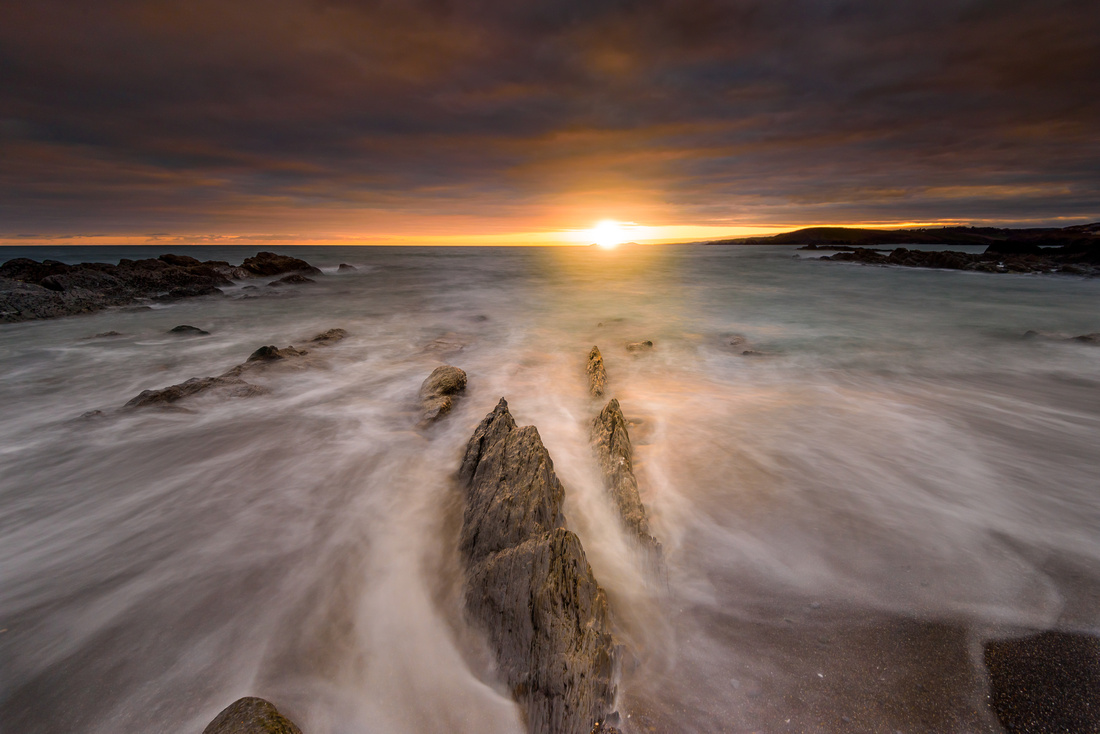

So try to look away from the scene and look at the captured photograph with a fresh pair of eyes again. We often see what we want to see when viewing the captured image and the scene at the same time.
These are all just very basic steps which can lead you to the more advanced aspects of photography like lens compression and the correct use of focal length, being more artistic with depth of field and blending several images together to create a more balanced exposure.
Always remember photography is an art form and we can use our cameras to compose each image like a painting adding our own personal touch with our camera settings. The ultimate aim for me is to try and capture a photograph correctly, leaving me with as little editing as possible (max 15mins per pic) so I can spend more time taking photographs than sitting at a desktop.
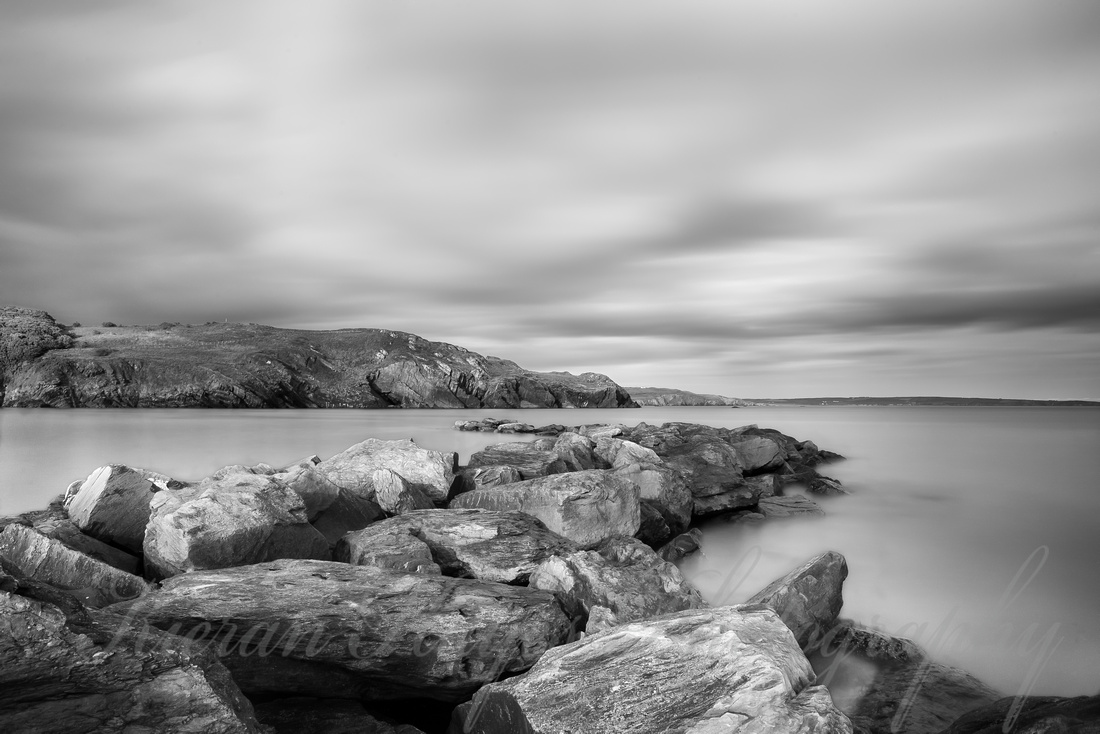

These are just my own personal ideas and suggestions for people interested in Seascape photography. I am sure I missed a few points along the way and possibly posted a few some may not agree with but that's the beauty of photography. Remember we always learn something new and we all have our own techniques.
So go explore, go get wet and immerse yourself in that beautiful ocean. Go fill your lungs with fresh air until you can feel the salt crystals forming on your skin because there is nothing more beautiful than standing in nature and trying your best to capture her beauty in a single image. Something I can only personally hope to achieve one day.
See you out there,
Kieran Hayes.
This blog post was partially written for the blog of Capture Landscapes which is a fantastic website for photography tips and tricks so go check it out :-)
